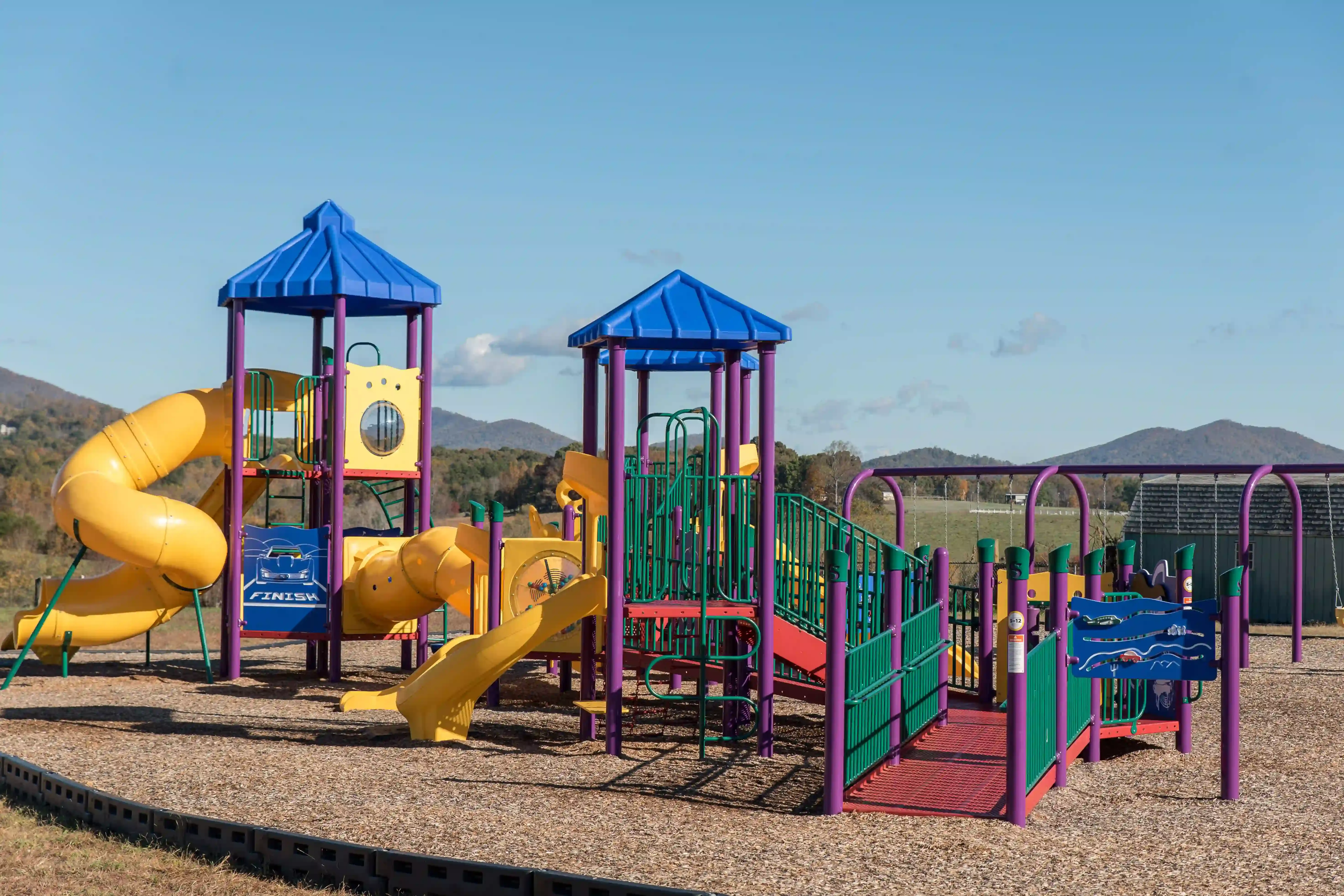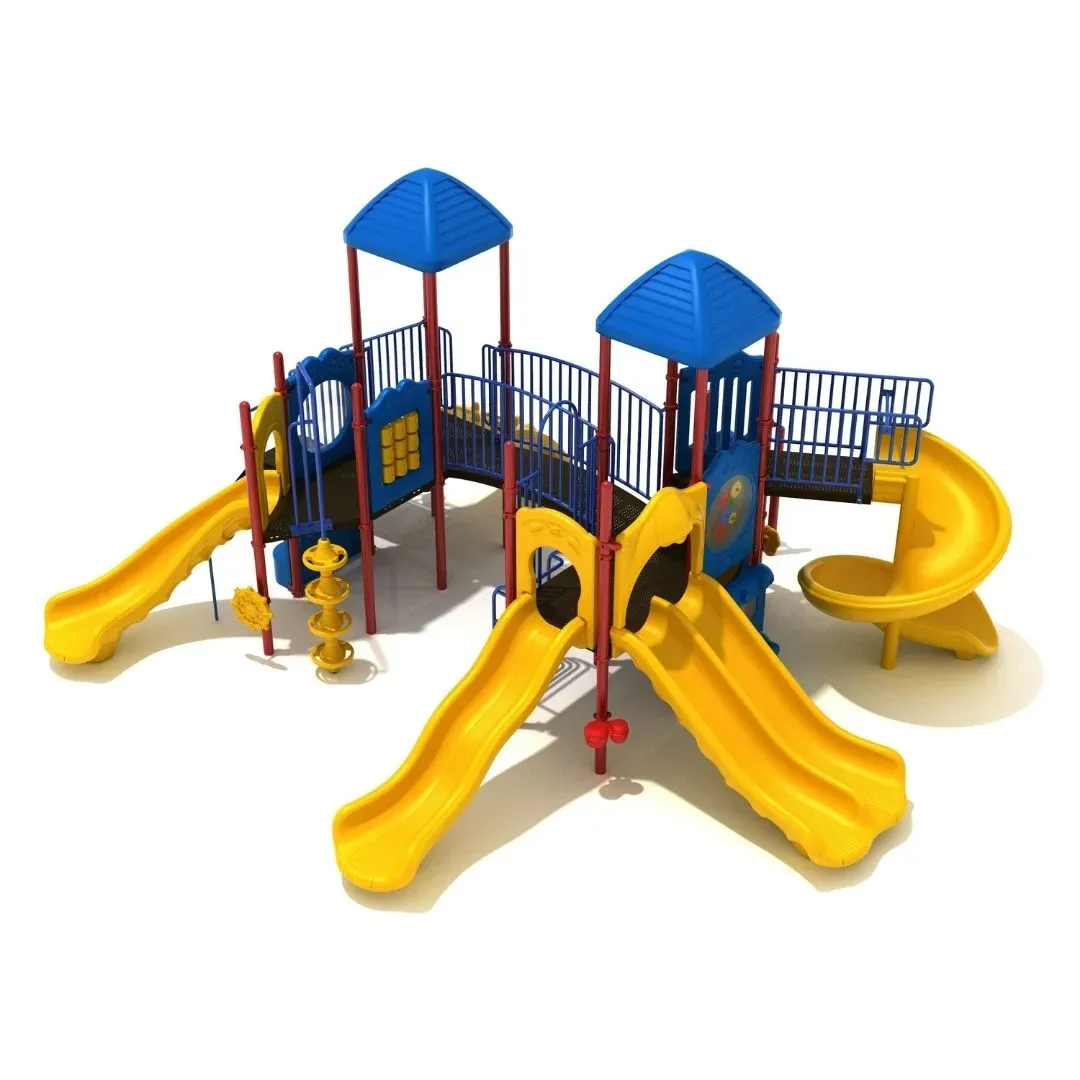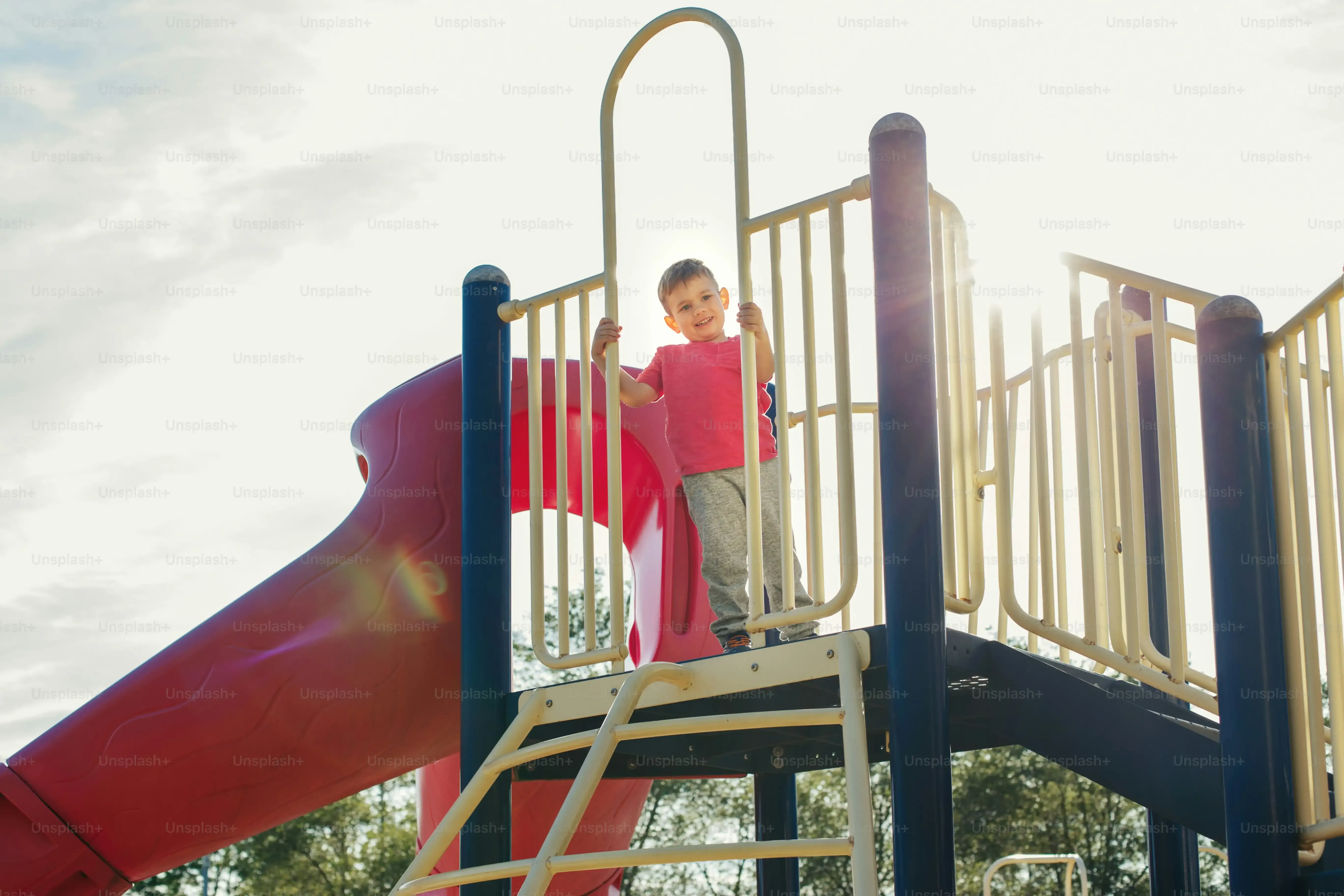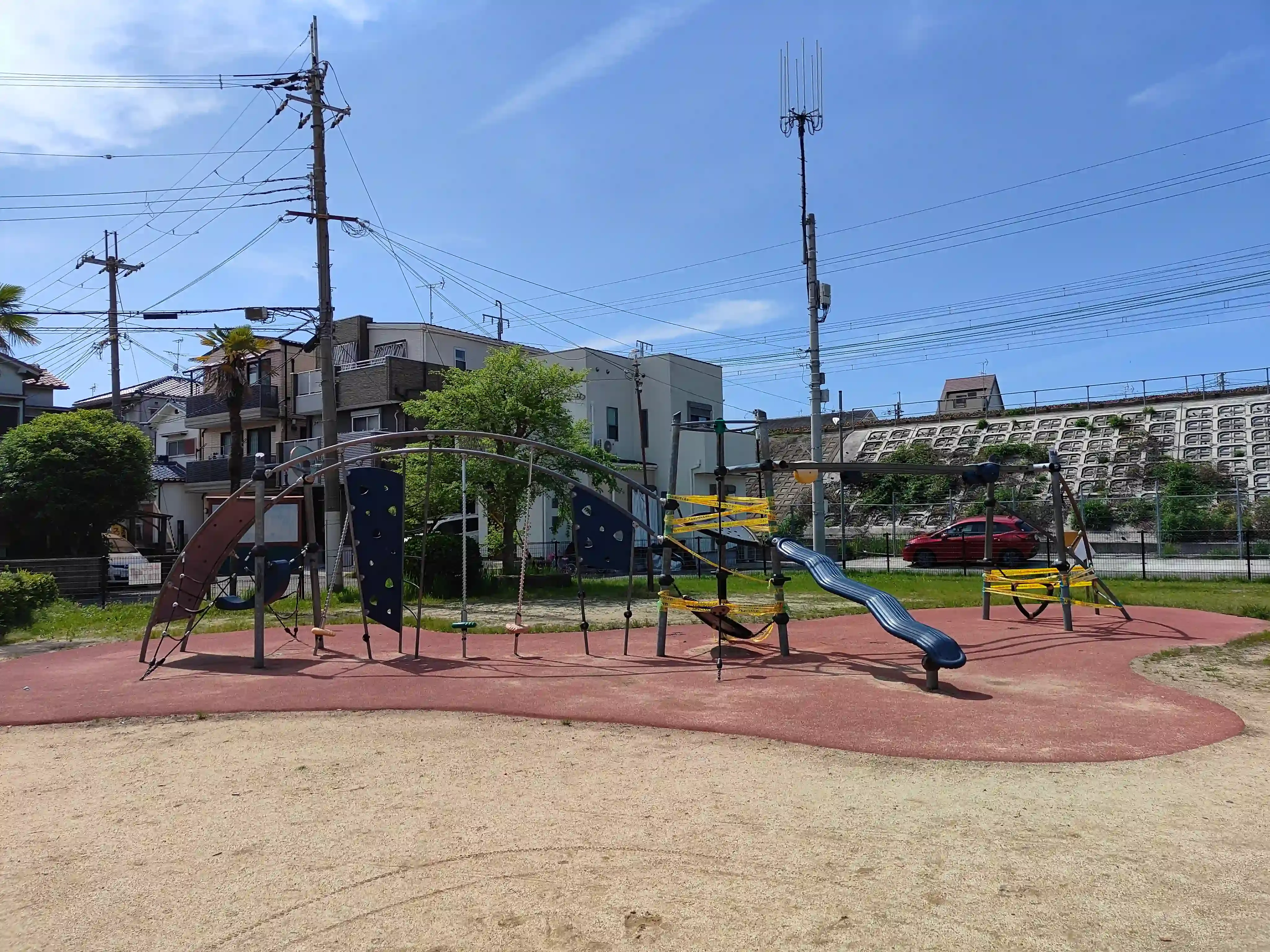Table of Contents
Think back to your favorite playground. Was it just a few metal poles and a slide, or something more? Getting it right for kids today means navigating the sometimes-murky world of commercial playground equipments. It's not just about slapping down some swings and calling it a day. You're investing in a community asset, a place where scraped knees teach resilience and shared laughter builds friendships. But with countless options, regulations, and design considerations, where do you even start?
More Than Just Swings: The Real Value of Commercial Playgrounds

More Than Just Swings: The Real Value of Commercial Playgrounds
Beyond Physical Activity: Building Brains and Bodies
so everyone knows kids need to run around. That's a given. But thinking commercial playground equipments are just glorified exercise machines misses the point entirely. These aren't just places to burn off energy; they're crucial developmental landscapes. When a kid figures out how to climb a tricky structure or navigate a wobbly bridge, they aren't just using muscles. They're problem-solving, assessing risk, and improving spatial awareness. It's like a physical IQ test, but way more fun and without the standardized bubble sheets.
Consider the simple act of going down a slide. It involves understanding gravity (sort of), anticipating the end, and managing their body weight. Monkey bars? Pure planning and grip strength, but also the mental challenge of sequencing movements. Quality commercial playground equipments push kids in ways screens simply can't, building cognitive skills alongside physical ones.
Forging Friendships and Social Skills
Playgrounds are tiny societies in action. This is where kids learn to share (or not share, and deal with the fallout), negotiate turns, and understand social cues. You watch a group of kids trying to figure out how to use a multi-person swing or organize a game of tag, and you see real-time social development happening. It's messy, sometimes involves tears, but it's authentic.
Think about the kid who's a little shy. A well-designed playground offers different zones – maybe a quiet corner for solitary play, or a sand area where collaboration happens naturally. They learn to interact at their own pace. These aren't just pieces of metal and plastic; they're catalysts for social interaction, turning strangers into playmates, even if just for an afternoon. The value of commercial playground equipments in fostering these essential life skills is frankly, underestimated.
Here are some of the less obvious benefits kids gain:
- Improved critical thinking by navigating complex structures.
- Enhanced risk assessment through controlled challenges.
- Development of communication skills when coordinating play.
- Increased emotional regulation when dealing with conflict or frustration.
- Boosted creativity through imaginative role-playing scenarios.
Investing in Community Connections and Well-being
A vibrant playground acts as a community hub. It's where parents chat while kids play, where neighbors connect, and where a sense of local identity can form. It signals that a neighborhood or town cares about its youngest residents and provides a safe, accessible space for families. This isn't a small thing in an age where people can feel increasingly disconnected.
Investing in quality commercial playground equipments isn't just an expense; it's an investment in public health, community cohesion, and the overall quality of life. It’s providing a place where childhood memories are made, away from the structured demands of school or the passive entertainment of screens. It's about building stronger, healthier, and more connected communities, one slide and swing set at a time.
Selecting the Right Commercial Playground Equipments for Your Space

Selecting the Right Commercial Playground Equipments for Your Space
Know Your Audience (It's Not Just 'Kids')
Alright, so you're past the "why." Now comes the "what." Picking out commercial playground equipments is less like picking furniture and more like stocking a diverse community center. Who are you actually building this for? Toddlers need low-to-the-ground, safe structures. They're all about exploring textures, simple slides, and maybe a tunnel they can crawl through without getting stuck. Little kids (think 5-8) are ready for climbing walls, slightly higher slides, and more complex interactive panels. Big kids? They want height, speed, and challenge – monkey bars, taller slides, perhaps some spinning elements.
Ignoring these age ranges is a rookie mistake. A playground packed with gear only suitable for ten-year-olds in a park frequented by preschoolers is just wasted space (and a potential headache). You need a mix, or at least a clear focus based on the primary users. And don't forget accessibility. Inclusive design isn't an add-on; it's essential. Ramps, sensory panels, and swings designed for different abilities ensure everyone gets to join the fun.
Site Specifics and Budget Realities
let's talk dirt and dollars. Before you fall in love with that giant, multi-tower structure, look at the actual space you have. Is it flat? Sloped? What's the drainage like? Are there existing trees or obstacles you need to work around? The size and shape of the site dictate what fits and what doesn't. You also need to factor in safety surfacing requirements – that's the stuff under the equipment that cushions falls. The required fall height determines the type and depth of surfacing needed, and that adds up fast.
And then there's the budget. Commercial playground equipments aren't cheap. Get quotes early and understand what's included – is it just the equipment, or does it cover installation, surfacing, and shipping? Prioritize durability and safety over flashy features if funds are tight. A well-built, simpler structure lasts longer and is safer than a complex, flimsy one. It’s about getting the most play value for your investment, not just the biggest footprint.
Here's a quick checklist for site evaluation:
- Measure the total usable area.
- Note any slopes or drainage issues.
- Identify existing features (trees, rocks, buildings).
- Consider sun exposure and potential for shade.
- Check for underground utilities or overhead power lines.
- Determine access points for installation and maintenance.
Designing Inclusive & Engaging Commercial Playground Equipments

Designing Inclusive & Engaging Commercial Playground Equipments
Making Sure Everyone Gets to Play
Designing truly great commercial playground equipments means ditching the idea that one size fits all. You're not just putting metal and plastic in a field; you're crafting experiences. This is where the magic happens, moving from just "equipment" to "engaging play environment." Think about it: a ramp isn't just for wheelchairs; it's also a fun, less intimidating way for toddlers to access a structure or for kids to race toy cars down. Sensory panels with different textures, sounds, or visual elements aren't just for kids with specific needs; they add a rich layer of discovery for *every* child. Inclusive design isn't a separate category; it's good design, period. It’s about providing graduated challenges, different ways to access play, and diverse activities that appeal to a wide range of interests and abilities, ensuring no kid feels left out watching from the sidelines.
Beyond Purchase: Installation, Safety, and Longevity

Beyond Purchase: Installation, Safety, and Longevity
Don't Skimp on Getting It Installed Right
you've navigated the maze of options, wrestled with the budget, and finally picked your commercial playground equipments. High five. But the journey isn't over; in fact, this next part is arguably the most critical. Installation isn't just bolting stuff to the ground. It's precision work governed by strict safety standards. Thinking you'll save a few bucks by having the local handy-person or a well-meaning volunteer group tackle it? That's a gamble with potentially severe consequences. One misplaced bolt, one slightly off-kilter support, and you've created a hazard zone, not a play space. Professional installers know the regulations, they have the right tools, and they ensure everything is anchored correctly and meets fall height requirements with the appropriate surfacing. This isn't the time for a DIY project. Pay for the expertise; it's part of the essential cost of safe, compliant commercial playground equipments.
Keeping It Safe and Standing for Years
Once the last bolt is tightened and the safety surfacing is spread, your job isn't done. Commercial playground equipments require ongoing vigilance. Safety checks aren't optional; they're mandatory for keeping kids safe and extending the life of your investment. This means regular inspections for wear and tear, loose bolts, cracked plastics, or splintering wood. It means checking the depth and condition of the safety surfacing. Harsh weather, heavy use, and unfortunately, occasional vandalism, all take a toll. A proactive maintenance schedule catches small issues before they become big, expensive problems or worse, cause an injury. Neglecting this step is like buying a car and never changing the oil – it might run for a bit, but it's destined for a premature breakdown. Proper care ensures your commercial playground equipments remain a safe, fun asset for the community, not a liability waiting to happen.
Here's a basic maintenance checklist:
- Weekly visual inspection for obvious hazards (trash, broken parts, vandalism).
- Monthly operational inspection checking moving parts, bolts, and connections.
- Quarterly inspection of surfacing depth and condition, checking for compaction or displacement.
- Annual comprehensive inspection by a certified playground safety inspector (CPSI).
- Keep detailed records of all inspections and repairs.
Building More Than Just a Playground
Ultimately, selecting and installing commercial playground equipments isn't a one-time transaction; it's an investment in community health and childhood development. Skimping on quality or overlooking design details leads to problems down the line – think premature wear, safety hazards, and a space kids simply don't use. A well-planned playground, while requiring careful consideration upfront, becomes a durable, engaging hub that pays dividends in laughter, learning, and connection for years to come. Get it right, and you build something truly valuable.